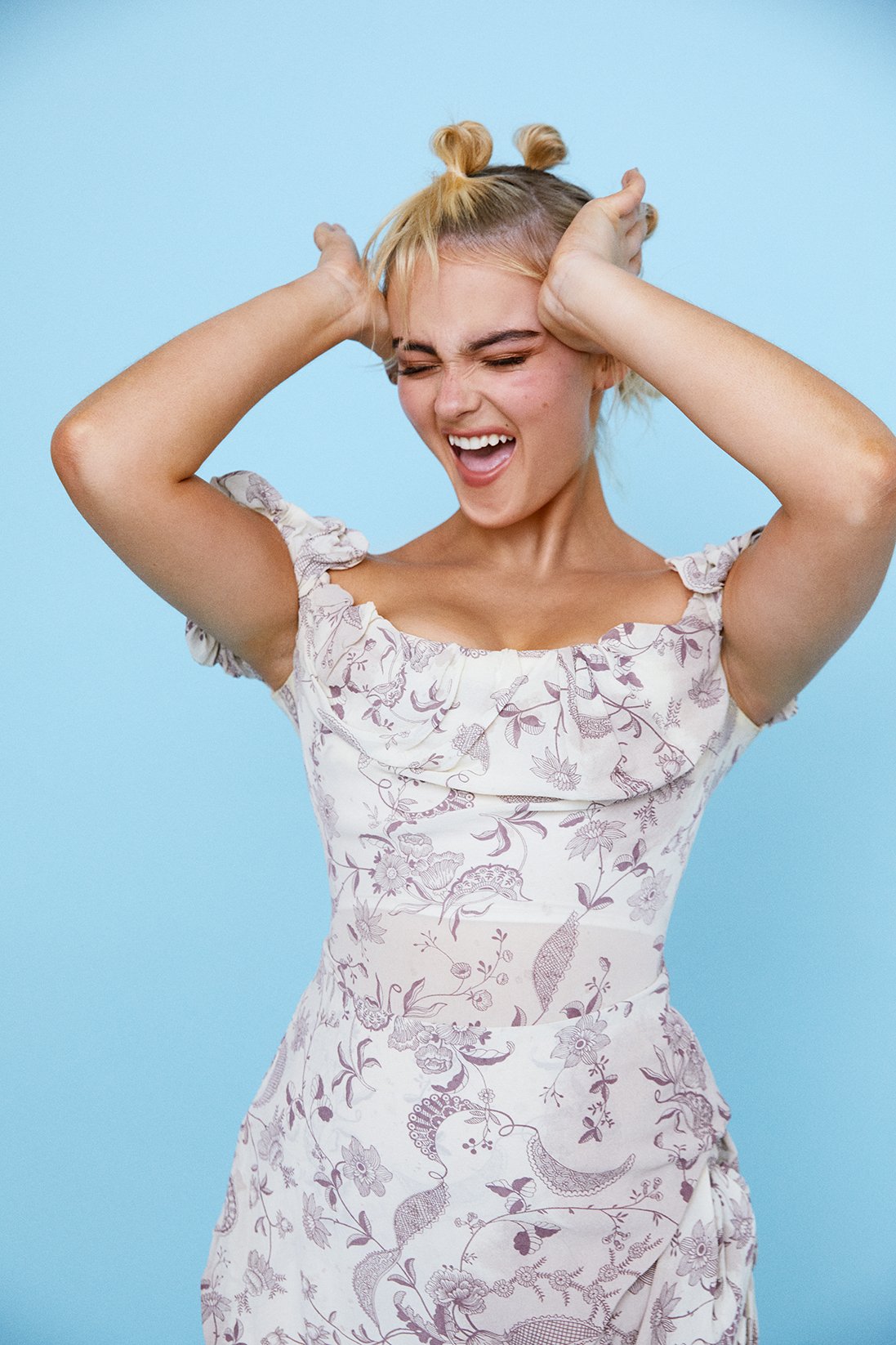
How Millie Gibson Redefines Irene in The Forsytes
Words By: Anya Duncan
In the quiet space between centuries, where gaslight fades into the first electric glow, the Forsytes stand. They are a family bound less by affection than by determination, with Soames Forsyte embodying the certainty of late Victorian Britain at their centre. Then, all too quickly, Millie Gibson’s Irene arrives and unsettles the foundations of his carefully ordered world. First written by John Galsworthy between 1906 and 1921, the story traces desire through drawing rooms filled with secrets, where the line between possession and love blurs. In this 2025 retelling, Gibson’s Irene is shaped not by nostalgia or inherited interpretations but by instinct, physicality, and a script that lets its women lead.
When she first began preparing, Millie instinctively turned to the original novel, but the show’s writer Debbie Horsfield stopped her with a surprising directive: don’t. Horsfield wanted this version to breathe differently, free from a text that, as Gibson puts it, was “very male-led.” Early conversations revealed that Horsfield was rewriting the story’s spine. This Irene would not shrink or serve as a mere muse. She would dream.
She would live.
To play a woman who lives who dreams first and suffers later Gibson began with the body. She rehearsed with choreographer Sammy Murray while still filming Doctor Who, learning to inhabit Irene physically before speaking a line. The work, she says, unexpectedly transformed her posture: it lifted her spine, deepened her breath, and created space for a young woman moving with intention.
Team Credits
Photographer: David Reiss
Styling: Cher Coulter
Hair: Narad Kutowaroo
Makeup: Sara Hill
Millie Gibson wears: @thefrankieshop
From there, the costumes did the rest.
“The physicality just comes to you,” she says. “You can’t slouch in a corset. It’s just so hard. I’ve tried.”
The restriction became a tool. As Irene enters the Forsyte household, Gibson notices her corsets being tightened a little more each episode. Evening gowns grew heavier and more elaborate. Some days she understood the scene the moment she inhaled: “The corset’s tight today, so I’m being controlled in this,” she explains.
Her body told the story before her dialogue did. Though it was Horsfield’s writing that first drew Millie into the role.
The early episodes frame this vulnerability with deliberate stylisation. Gibson recalls filming what felt like endless slow-motion sequences: “Another one? Am I just going to be in slo-mo?” These shots, she explains, reflect Soames’s gaze. We meet Irene through his romanticised, distorted vision. A spiritlike figure beyond his grasp.
But performing a woman denied agency is different from playing a modern character in crisis. Gibson admits she struggled at first. Reading certain scenes, her instinctive reaction felt polarising compared to Irene’s:
“Irene’s story was so relatable. I fell in love with the way she loves so strongly, but so naïve. Her physicality is always there. Debbie wrote her beautifully.”

“It’s funny because me as Millie, I was reading some of these scenes being like, “I wouldn't stand for that.” I remember that Jack Davenport told me to take my 2025 head off and put my 1800s head on.”
With that shift, the emotional logic settled. Gibson began to understand that Irene’s retreat into herself is a historical reality, a means of survival. “It’s like when someone betrays you,” she explains. “You think you’ll react defiantly, but actually you fold inward and bleed into their actions. That’s what domestic abuse can be.”
Yet the series refuses to leave Irene isolated. Gibson speaks warmly about Irene’s friendship with June. She describes a “protective bond” between them, noting that the two youngest women rebel in different but parallel ways. Their connection becomes its own quiet act of resistance: tenderness thriving where it shouldn’t.
This is what sets this version of The Forsytes apart. Gibson’s Irene is a full person shaped by pressure, expanded by kindness, diminished by control, and illuminated by the youthfulness she is rarely allowed in earlier adaptations. Horsfield contextualises Irene’s situation, and through Gibson, the character’s cage begins to open. When asked whether one scene captures this, Gibson points to a quiet, recurring moment:
“The first time you see her, and then again towards the end of the season, she repeats her barre warm-up. It circles back and lets her look in the mirror and realise what she’s lost. She’s a completely different person.”
The Forsytes was once a story about power and generational wealth. Now it is anchored by something deeper. Gibson embodies that shift, and as audiences look to series two, the question is how much further that anchor will reach.




